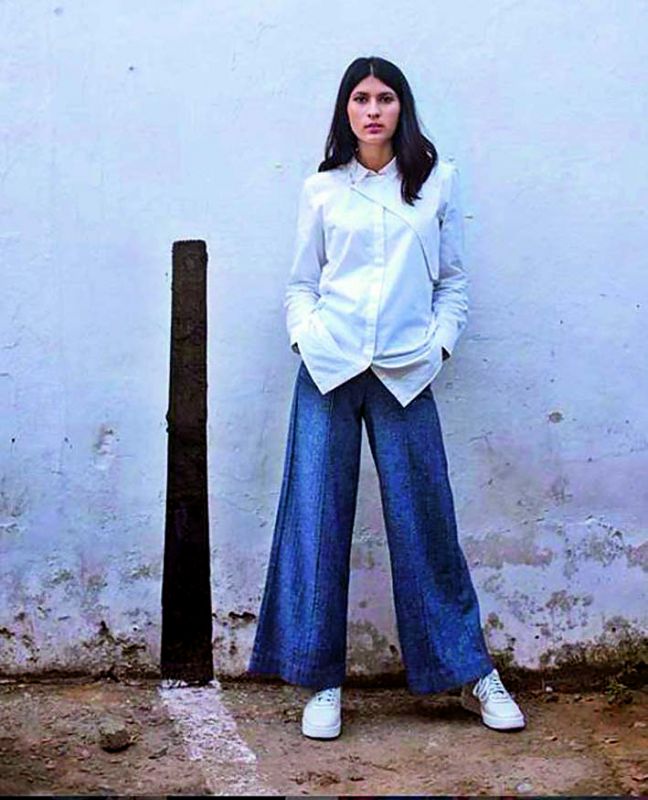Off with the logo
By doing away with traditional branding strategies, indie labels are letting their clothes do the talking and not the logos!
Back in the day, a brand’s logo was considered to be its cornerstone. From Nike’s swoosh tick to the three diagonal lines of Adidas, the logos gave unique identity to these brands. But today, branding has come a full circle. Many popular labels are now adopting anti-branding exercises, a big feature of which is to do away with the logo! Many big labels have reduced or stopped flaunting logos altogether. For instance, Puma’s newest collection, Suede, has very minimal presence of the iconic panther. Even high-end labels have adopted this trend. Louis Vuitton’s once-sought-after LV tag is seen less and less on the products. Even Dolce&Gabbana has shifted to the logo-less paradigm, instead relying on their vivid and eclectic prints to set them apart on the runway.
These acts of ‘de-logoing’ are consistent with the times; there is a lot of emphasis on indie brands, which are taking the antithesis route for their branding and advertising. One look at Anand Ahuja’s flagship, bhane, and you know that minimalism is the trademark for his brand. On bhane’s Instagram page, website or clothing, one will rarely find a trace of the brand’s logo. The only recognition of the label is the subtle mention of the name on a beige background in a white font.
 Anushka Sharma’s Nush featured Suppandi in their new collection
Anushka Sharma’s Nush featured Suppandi in their new collection
Sonam and Rhea Kapoor’s debut label, Rheson, follows a similar pattern with the name of the brand on a black background visible only in the website header and the display picture of the brand’s Instagram handle. Nush, Anushka Sharma’s clothing line, is also marketed along the same lines.
 Anand Ahuja’s label, bhane, has no trace of a logo, owing to its minimalist theme
Anand Ahuja’s label, bhane, has no trace of a logo, owing to its minimalist theme
How effective is this tactic?
What is it about doing away with logos that attracts millennial customers? Advertising mogul Piyush Pandey, the Creative Head of Ogilvy South-Asia Pacific, explains, “When the trademark of a brand is subtlety, then doing away with your logo seems like a good idea. But one also needs to keep in mind that if the logo does not speak for your brand, your product should. These days people are not fond of blatant and loud logos on their products. For instance, when you go to a conference and the organisers give you a T-shirt with the logo of the company, usually, you would come home and give it to your domestic help. If the quality is good, you may wear it at night.” He adds, “Also, the higher you climb the social strata, the obvious show-off reduces.”
 A model wearing a bhane outfit
A model wearing a bhane outfit
But Ashish Khazanchi, Managing Director of Enormous, feels the logo is still relevant. “If a brand is recognised and famous, an absence of a logo is understandable. But for newly emerging labels, visual branding always helps. Maybe once they reach the level of labels like Prada or Gucci, a logo-less brand can be taken into consideration. Until then if not a logo, an iconic theme colour or pattern needs to reflect who the brand is and make it stand out in the crowd,” he says.
 Dolce&Gabbana’s eclectic prints have become their trademark instead of the D&G logo
Dolce&Gabbana’s eclectic prints have become their trademark instead of the D&G logo
Is it difficult for advertising agencies and marketing firms to deal with a brand that refuses to put itself out there very visibly? Abdul Ahad, Creative Director of PAD Integrated Communications, says, “Most of these brands that start out without the logo, or a proper visual branding, usually have a face behind the brand like a celebrity who can carry forward the lack of a logo. But for advertisers, it gets very difficult to cater to such requirements. If the brand is not established already, it is a unique logo that we use to embed the brand in the mind of the customer and make it stand out from the litter.
The ‘tease and reveal’ technique, to create a sense of mystery, works only when your brand is so well-known that people are constantly looking forward to your products. As an emerging brand with not-so-deep pockets, you are going to get lost.” While brands are doing away with in-your-face logos, the brand-conscious customers are the ones who started the entire revolution of shedding overt branding on thir outfits.
One may remember the scene from the movie Hindi Medium where Irrfan Khan and Saba Qamar step out of their car dressed in Gucci and Armani from head to toe, flaunting the luxury logos in every way possible. Well, those days are gone! Now it’s the era of boxy silhouettes, pastel palettes and graphic slogans on solid tees. After all, people want their personality to talk and not the brand!
These days people are not fond of blatant loud logos on their products. For instance, when you go to a conference and the organisers give you a t-shirt with the logo of the company, usually, you would come home and give it to your domestic help
— Piyush Pandey, Creative Head of Ogilvy South-Asia


















